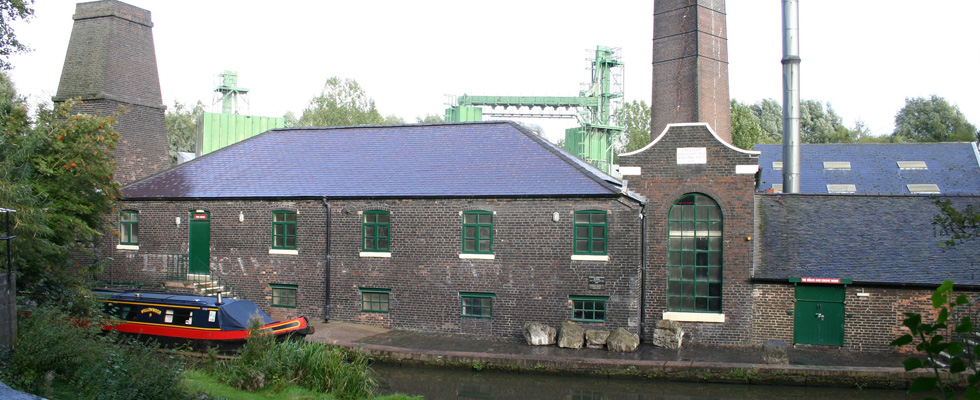Home of the last surviving steam driven potters mill in the world, Etruria Industrial Museum in Stoke-on-Trent will be in full steam on the day of our visit! With the 1820`s beam engine driving the 1857 bone and flint mill, our guided tour will take in the highlights of the site. Located on the Trent & Mersey Canal and the Caldon Canal, this is the heartland of the old pottery industry and much of the history of the area is on display here. With a working forge, canal warehouse, dispensary and house of recovery, there is plenty to see before adjourning to the Tea Room. As we are having a guided tour, I do need to know if you are interested in advance, please give at least 7 days notice. Entry is only £8 including the excellent guided tour (£3 without). Youngsters under 14 are admitted free.
Tucked away, out of sight of most visitors to the Potteries of Stoke-on-Trent, is the Etruria Industrial Museum. Opened by Fred Dibnah in 1991, this is one of the un-sung historic industrial locations that deserves wider recognition. On Sunday 12th April, a group of CPUK members were treated to a guided tour by the Museum’s knowledgeable and enthusiastic volunteer guides. The Museum is a well-preserved mill, started by Jesse Shirley in the 1850s. Designed to grind the flint and bone (ever wondered why it’s called ‘bone china’? … now you can make an informed guess!) for independent potters, the mill was situated in Etruria because of its ideal access to two canals. With the Trent & Mersey forming the site’s boundary on one side and the Caldon Canal on another, this really was the perfect position for anyone wanting to utilise the transport network. What made our afternoon extra special was that it was one of a few weekends each year when the Museum’s guides power up the steam driven machinery. This is no small feat of either engineering or organisation. It takes a week to prepare for steaming as the 1903 boiler requires gently TLC to be brought up to working temperature. Once there, the power of the double acting condensing rotative beam engine is enough to drive a phenomenal number of gears which in turn grind the raw materials into the necessary powders in huge pans. The most memorable aspect of the day for many of us, I think, was witnessing the power and movement of the beam. Unfortunately, the heat from the fire wasn’t enough to force the rain clouds away and we were grateful for the very warm and civilised café before we left. This really is a hidden gem. If you couldn’t join us, why not go along during another steam-up weekend? www.etruriamuseum.org.uk



